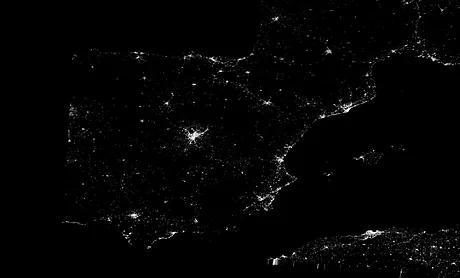On April 28 at 12:33 pm, Spain and Portugal experienced the most severe blackout that has affected Europe in decades. As night fell, the polar satellites continued to monitor this crisis, which lasted well into the early morning in several regions. Although electricity was restored in most of the territory by nightfall, some areas remained in darkness for a longer period, even until 5 am the following day.
Three NASA satellites captured the extent of the blackout and documented the gradual recovery of electricity from Earth's orbit, as shown by the European Space Agency (ESA) in a statement released on Monday.
The gif combines five images from satellites that flew over the Iberian Peninsula on April 29, 2025, at 03:12, 03:36, 04:30, 04:54, and 05:18NOAA/NASA (VIIRS/DNB). Processed with Black Marble.
Specifically, these nighttime images were captured by the Suomi-NPP, NOAA-20, and NOAA-21 satellites, showing areas with prolonged power cuts and restored light emissions during the night.
The three satellites, orbiting the Earth from pole to pole, made six passes over Spain and Portugal between the evening of April 28 and the morning of April 29. Each pass provided a snapshot of the evolution of the power grid situation, and this GIF is composed of five images from satellites that flew over the Iberian Peninsula on April 29 at 03:12, 03:36, 04:30, 04:54, and 05:18 hours.
The fact that it was a clear night over almost the entire Iberian Peninsula, according to the ESA, facilitated the capture of these images.
Usual nighttime image of Spain and PortugalNASA
The sequence contrasts with the usual nighttime image of the Iberian Peninsula, characterized by intense lighting. As ESA scientists point out, most Europeans live under light pollution. Among other projects related to the effects of lighting, the European Space Agency contributes to the Night Watch project, a European multispectral mission that studies nighttime light emissions.
For ESA scientists, this major blackout highlights the importance of having space observation tools to assess the resilience of critical infrastructures, prioritize repairs, and optimize emergency responses.
